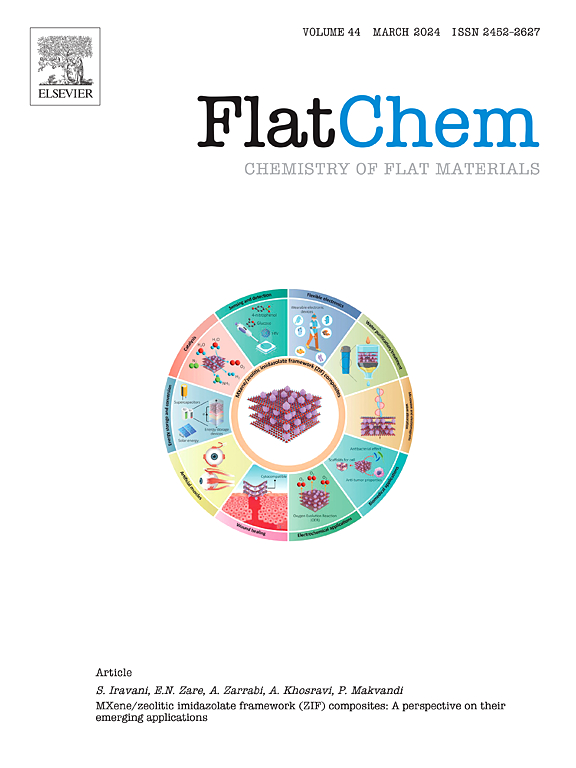Phase engineering of MoS2 monolayers: A pathway to enhanced lithium-polysulfide battery performance
IF 6.2
3区 材料科学
Q2 CHEMISTRY, PHYSICAL
引用次数: 0
Abstract
Phase engineering of MoS monolayers offers a promising strategy to enhance lithium-sulfur (Li–S) battery performance by tuning interfacial chemistry and redox dynamics. Using density functional theory calculations, we compare the semiconducting 2H and metallic 1T′ polymorphs as cathode host materials, analyzing their adsorption energetics, charge transfer, reaction barriers (via the nudged elastic band method), thermodynamic stability (via gas-phase and solvated models), and vibrational responses. We find that 1T′-MoS enables strong polysulfide anchoring and low delithiation barriers, while the reversible 2H1T′ transition provides a tunable balance between conductivity and structural integrity. These findings identify phase-engineered MoS architectures as robust, rate-capable platforms for suppressing the shuttle effect and guiding the design of high-performance Li–S battery cathodes.

二硫化钼单层的相工程:提高锂-聚硫电池性能的途径
二硫化钼单层的相工程通过调整界面化学和氧化还原动力学,为提高锂硫电池的性能提供了一种有前途的策略。利用密度泛函理论计算,我们比较了半导体2H和金属1T '多晶作为阴极主体材料,分析了它们的吸附能量、电荷转移、反应势垒(通过轻推弹性带方法)、热力学稳定性(通过气相和溶剂化模型)和振动响应。我们发现1T ‘ -MoS2能实现强多硫化物锚固和低分解障碍,而可逆的2H↔1T ’转变在电导率和结构完整性之间提供了可调的平衡。这些发现确定了相位工程MoS2架构是抑制穿梭效应和指导高性能Li-S电池阴极设计的强大的、具有速率能力的平台。
本文章由计算机程序翻译,如有差异,请以英文原文为准。
求助全文
约1分钟内获得全文
求助全文
来源期刊

FlatChem
Multiple-
CiteScore
8.40
自引率
6.50%
发文量
104
审稿时长
26 days
期刊介绍:
FlatChem - Chemistry of Flat Materials, a new voice in the community, publishes original and significant, cutting-edge research related to the chemistry of graphene and related 2D & layered materials. The overall aim of the journal is to combine the chemistry and applications of these materials, where the submission of communications, full papers, and concepts should contain chemistry in a materials context, which can be both experimental and/or theoretical. In addition to original research articles, FlatChem also offers reviews, minireviews, highlights and perspectives on the future of this research area with the scientific leaders in fields related to Flat Materials. Topics of interest include, but are not limited to, the following: -Design, synthesis, applications and investigation of graphene, graphene related materials and other 2D & layered materials (for example Silicene, Germanene, Phosphorene, MXenes, Boron nitride, Transition metal dichalcogenides) -Characterization of these materials using all forms of spectroscopy and microscopy techniques -Chemical modification or functionalization and dispersion of these materials, as well as interactions with other materials -Exploring the surface chemistry of these materials for applications in: Sensors or detectors in electrochemical/Lab on a Chip devices, Composite materials, Membranes, Environment technology, Catalysis for energy storage and conversion (for example fuel cells, supercapacitors, batteries, hydrogen storage), Biomedical technology (drug delivery, biosensing, bioimaging)
 求助内容:
求助内容: 应助结果提醒方式:
应助结果提醒方式:


